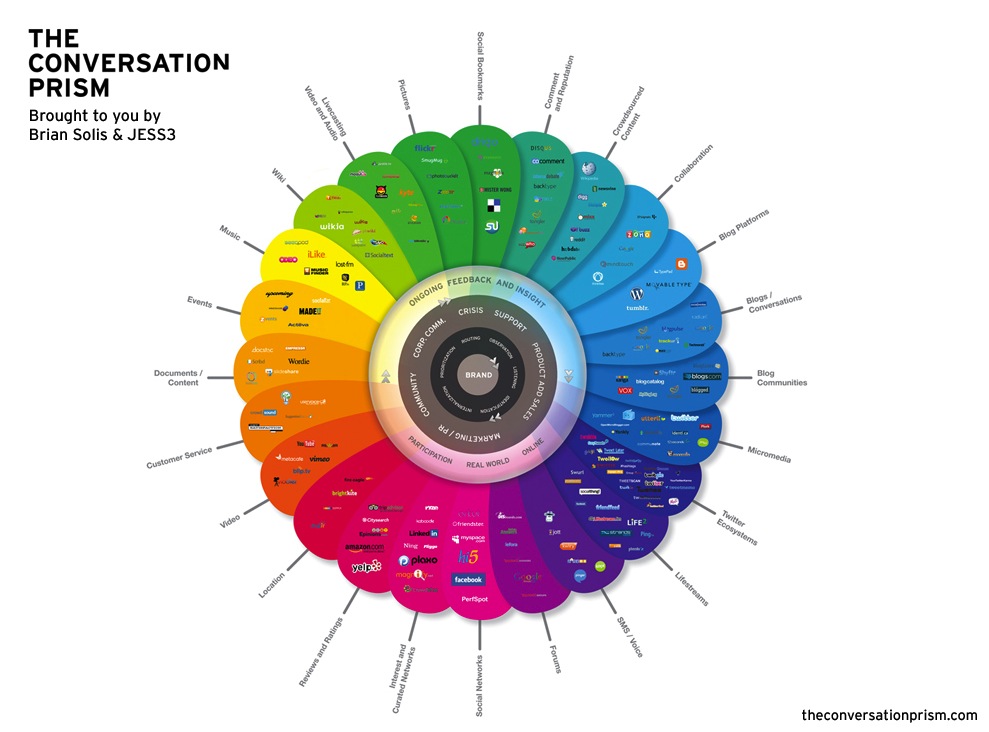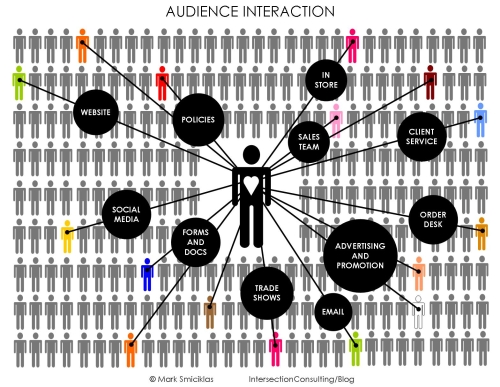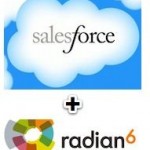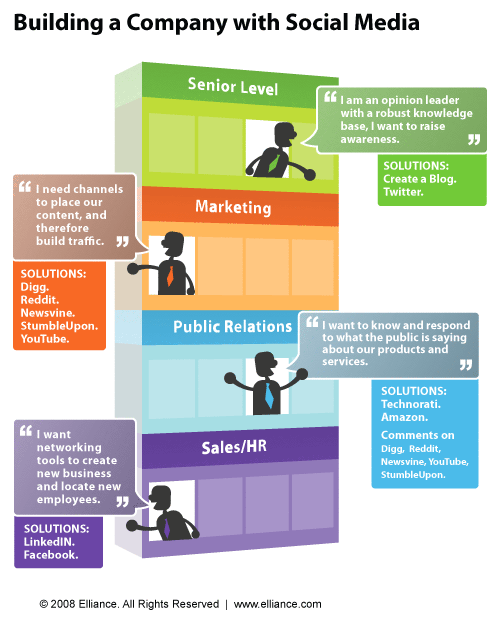What the CEO needs to know: The change in the communications landscape has made customers more important than prospects
 In an ever changing communications landscape the role of customer communications or CRM has become more important than ever; the ability for customers to express themselves both positively and negatively now has both reach and impact that far outweigh any marketing programmes that a brand or organisation could run.
In an ever changing communications landscape the role of customer communications or CRM has become more important than ever; the ability for customers to express themselves both positively and negatively now has both reach and impact that far outweigh any marketing programmes that a brand or organisation could run.
For brands this means understanding and managing their customers and leveraging their content to drive business – but to do this means finally moving to a customer-centric organisation and making the products and services the tools to drive satisfaction, loyalty and retention. The digital and social world has put the consumer in the driving seat and brands must now work hard to influence them.
(Infographic from GetSatisfaction here)
To really get to grips with this, there are three questions that we need to answer, the first is whether we really understand why the dynamic is changing, the second is about knowing what it is that we have to do in this new marketplace and the third how we get to success and if we are ready for it.
Much as this topic is enormous, laying out the new foundation for CRM and marketing strategy, this paper attempts to answer these questions and construct the basis for understanding how to proceed.
Do we really understand why the dynamic has changed?
In days gone by CRM practitioners would often role out the phrase that “a satisfied customer tells one person, a dissatisfied customer tells eight to sixteen others” to drive the importance of communicating and managing the experience of customers and not solely prospects. We know that the growth of organic business has always been easier per dollar through cross-sell and up-sell than new customer acquisition and hence the development of this practice.
 Today the market dynamic has changed, digital, social and mobile have created a paradigm shift that changes our leading line, today a happy customer tells one friend, an unhappy customer tells everybody. So what has really happened? The web has shifted the power balance from brands that controlled paid media to the consumer whose voice is now louder and present on more channels than a brand could ever hope to be – blogs, websites, reviews, social networks – the conversation (see The Conversation Prism) is larger and more prevalent than any marketing campaign could ever hope to be.
Today the market dynamic has changed, digital, social and mobile have created a paradigm shift that changes our leading line, today a happy customer tells one friend, an unhappy customer tells everybody. So what has really happened? The web has shifted the power balance from brands that controlled paid media to the consumer whose voice is now louder and present on more channels than a brand could ever hope to be – blogs, websites, reviews, social networks – the conversation (see The Conversation Prism) is larger and more prevalent than any marketing campaign could ever hope to be.
Beyond this, the explosion of channels and marketing messages has made the consumer more sceptical and suspicious, the 50s housewife who watched Ariel on TV and then went out to the store to buy it is gone; today she wants to see customer reviews and recommendations above marketing messages and actively seeks these out before making any purchase decisions.
 The market structure is also different, the so-called ‘long tail’ of the web has proven how barriers to entry for new products are now much lower and anyone can be a seller of anything (look at eBay), this plethora of choice makes customers more fickle, turns every product very quickly into a commodity and makes retention critical to business success.
The market structure is also different, the so-called ‘long tail’ of the web has proven how barriers to entry for new products are now much lower and anyone can be a seller of anything (look at eBay), this plethora of choice makes customers more fickle, turns every product very quickly into a commodity and makes retention critical to business success.
The cost of recruiting new customers has increased dramatically and today can be estimated at anywhere between 4 and 100 times that of selling to an existing customer – when you look at the business costs and the potential impact of abandoning your customers it is clear that they must be the number one priority.
Do we know what to do in this new marketplace?
It isn’t enough to understand the dynamics of the market, we now need to know our customers inside out – to really communicate on a 1-to-1 basis we have to deliver a personalised message of value, and this takes knowledge and insight. Simple socio-demographic segmentation is rapidly losing its ability to drive this insight (even it is still very important) and more detailed insider knowledge based around psychographic, behavioural and usage of specific products is no necessary to understand and be able to respond to the needs of the consumer.
Beyond understanding a customer, communicating with them has also evolved; customer service is now an expectation at every touch point, not solely through a call centre whose number is hidden on the base of the packaging. As a consumer I want assistance online, in the store, on the phone and with the explosion of mobile, wherever I might be when a question arises.
 Between understanding and then communicating with consumers there is a need for a whole new toolkit, one that works in real-time across different channels and connects the data (now big data) together to drive knowledge. Within social media the first phase of this process is listening – tapping into the conversation about your brand and understanding where the issues are and those customers who are speaking loudly.
Between understanding and then communicating with consumers there is a need for a whole new toolkit, one that works in real-time across different channels and connects the data (now big data) together to drive knowledge. Within social media the first phase of this process is listening – tapping into the conversation about your brand and understanding where the issues are and those customers who are speaking loudly.
After listening, engaging with the consumer is the next step and it is no surprise that the large listening tools are now integrating the ability to connect directly with Twitter or Facebook for their messaging platforms or the acquisition by Salesforce.com of the Radian6 platform to integrate the listening and engagement component into their much larger CRM systems.
 Don’t be mistaken into thinking that direct mail and email are dead, because these channels still have immediate impact and relevance (email is still one of the most cost effective direct channels), but we need to use and understand them in the context of our consumers’ lives and figure out how they fit into a plan that includes real-time, direct messaging as part of a broader conversation.
Don’t be mistaken into thinking that direct mail and email are dead, because these channels still have immediate impact and relevance (email is still one of the most cost effective direct channels), but we need to use and understand them in the context of our consumers’ lives and figure out how they fit into a plan that includes real-time, direct messaging as part of a broader conversation.
How do we achieve success and are we ready?
It is true that effective CRM has never been a simple implementation – from the setup of the infrastructure and database to the collection and segmentation of the data needs a multitude of suppliers, applications and skillsets; but changes in technology should be making this easier, the web provides outsourced, out-of-the-box solutions that can help the functional side of CRM be implemented more easily.
 On the flip side, we need to adjust organisationally too. The impact of CRM is so great that it can no longer be siloed into a corner and left alone, the growth of consumer power and social media have roles to play across the whole organisation (see Building a Company with Social Media) and we need to educate our businesses about what this means, what approach we should take and how we integrate it into our existing processes.
On the flip side, we need to adjust organisationally too. The impact of CRM is so great that it can no longer be siloed into a corner and left alone, the growth of consumer power and social media have roles to play across the whole organisation (see Building a Company with Social Media) and we need to educate our businesses about what this means, what approach we should take and how we integrate it into our existing processes.
Becoming a consumer-centric organisation is easier for certain service-based industries and much harder for CPG and hard goods; but even these are starting to see the importance of putting their customers first.
There is no doubt that businesses succeed by going out and winning customers, and that taking a larger market share than last year drives the bottom line – what we need to understand better is the role that existing customers play in the market and how they could in fact be the secret weapon for future success.
